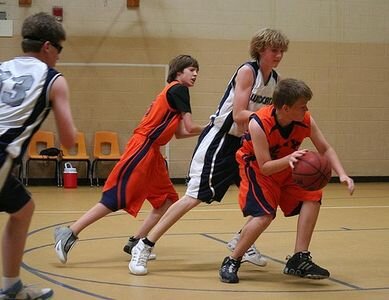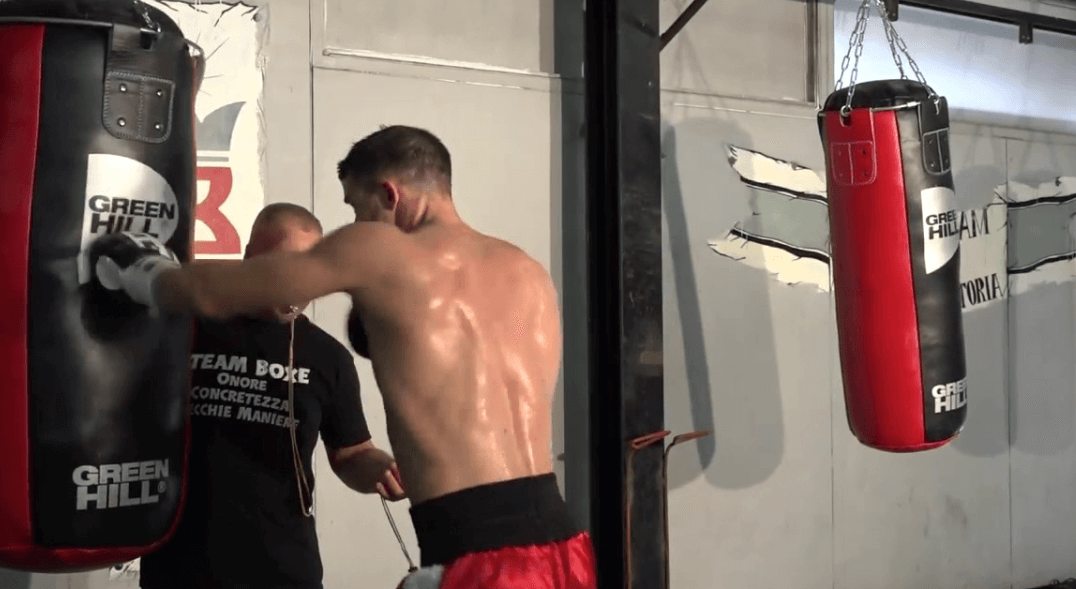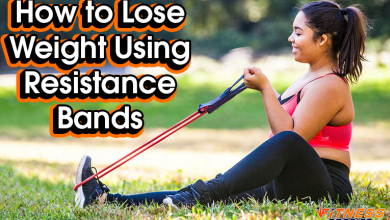Getting Strong Without a Gym- for Teenage Athletes

Posted by Fitnessbaddies on Aug 10, 2016
So I changed the title of this a couple times trying to see what would sound catchy and accurate. Heh. A bit awkward, but otherwise I will get emails about how someone cannot find the post. Gotta make it clear.
I currently have several teenage boys and teenage girls who are now lost without me since our school year came to an end, and hence their training.
A couple without access to a gym either so this post is dedicated to them. There are tons of routines out there for teens but in my training I only incorporate the best exercise routines for teenage girls as well as the lads too of course.
Its also for my cousin in faraway California who needs to get strong for his sports, but doesn’t have the guidance or access to a trainer and gym. I am going to just talk about what I know and direct those who are more curious to some of the much more advanced experts. The basic point in the end is
You don’t need fancy shit, machines or special equipment to get strong. You need a willing body, mind, some creativity, curiosity, common sense and then actually do some work and be willing to learn.
First priority is STRENGTH. Let me quote Rippetoe again
Strength is the basis for all athletic endeavours
Everything is easier and better the stronger you are. The only exception to this may be endurance athletes whose sport-specific training will inhibit big strength gains. BUT if we are talking highschool level here, endurance athletes benefit greatly from a higher strength level REGARDLESS.
Training for strength and training sport technique are not the same thing. Here is a definition of the difference by Rippetoe
“Specific sport skills (hitting a golf ball, making a dunk, throwing the shot put, a good takedown) are acquired IN SPORT PRACTICE; fitness for sport is enhanced by appropriate power training outside of sport practice…..The practice of general movement skills which may not be specific to the sport but which enhance its performance nonetheless.”
This gets confusing especially when coaches try to make their athletes stronger by “mimicking” a movement pattern they will use during a game and then just adding a weight to it. This is not how you go about getting stronger in a useful way. For instance, for the last couple months I have observed several kids come in the weight room, pick up a barbell, lean back and push it violently over their head at an angle in front of their eyes. I am usually standing behind them grimacing at the pounding their shoulder sockets are taking. I mean, I can LITERALLY see the shoulders being yanked forward (like a violent deadhang type yank) AT A UNNATURAL ANGLE, WITH WEIGHT. When I inquired I heard this was given them to do by their coach (this was for shot put, javelin and discus) for “explosive upper body strength”. I am going to step out on a limb here and say that from my limited knowledge (I have never coached either of those sports) this was not a safe or effective way to train for upper body power for those sports. Perhaps it COULD have been effective if the athlete had a good strength base and the range of motion, balance and movement were controlled and done with locked shoulders and proud chest……BUT the whole point is that power production is primarily a hip/glute/ham force transfer. You DO need a strong upper body, but training squats, deads, over head press and cleans would be ten times more effective and result in a stronger and better coordinated athlete overall, not to mention ACTUALLY train the athlete for power in a way that would translate into performance (the whole body being used, motor patterns etc). Anyway, being that I am the small and still unrecognized voice of strength coaching at this school, the best I could do was spread the notion that better results would be had with some overhead and push pressing and basic dumbbell or kettlebell snatching for “upper body explosiveness”. WTF. AND THEN THEY COME TO ME FOR SHOULDER REHAB. AGGGGGGGGGHHHHHHHH. Anyway, I digress.
Let’s get back to the point = Strength
UPPER:
Pushups
Wall Handstands (or working up to Handstand Pushups)
Body Rows (or reverse Pushups)
Pullups and Chinups
Dips
LOWER:
Squats
Lunges
Step-ups
Sprints
ABS/CORE:
Planks/Side Planks/Windmills
L-Sits
Full Situps
Leg Raises
You don’t really need much else besides that. The big question usually is how do I put a workout together? Most people can imagine the exercises…. but then think that putting them together is going to be complicated. For basic strength it should NOT be. The less complicated the better. An easy approach is either divide by upper and lower days or do full body days. Since anyone that is just starting on strength, especially with bodyweight, 4-5 times a week and start with a whole body workout alternating exercises. You will recover quickly and make strength gains quickly.
Being able to do 50 consecutive FULL pushups is strong. Doing 10 single leg squats is strong. Running up a hill full bore ten times with little rest is strong. There is no way you can stay weak if you are faithful and set some basic goals for yourself and faithfully try to do a little more and a little more, and push yourself a little harder.
HOW DO I SET UP REPS AND SETS?
How many reps can you do of the exercise? TRUE REPS.
TRUE REPS = Full range of motion with perfect control and form throughout the whole movement. No flopping, kipping, arching, bouncing or otherwise.
If you are a REAL beginner, the answer might be NONE. In which case you will need an easier version. Easier versions are not hard to do. Go on your knees for pushups, jump a bit for pullups, get your feet in for dips. Legs are usually manageable without significant modifications, just lower reps. But again TRUE REPS. Most people are relatively stronger in their lower body, so you can probably bang out more squats than pullups, but again YOU HAVE TO BE DOING IT RIGHT. Whats right?
GOOGLE it! And I will attach some links at the end of sites that have plenty of proper examples, and get a notebook to write down what you do everyday.
Start off with how many reps you can do for 1 set. The last one should feel very hard but not cause you to lose your form on the last rep. Write that number down.
Now do 4-5 sets of that number with a bit of rest in between. Enough rest to feel you are ready to go again, not enough rest to chat, text and pick your nose. 1-2 minutes max
So workout #1 can look like this.
Pick 2 upper, 2 lower, 2 core
reps of exercise x 1 set x 1-2 min rest
Repeat till have completed 5 Sets of each exercise.
Pushups
Body Rows
Squats
Lunges
Planks
Situps
Rest 1-2 minutes between 5 Rounds
OR
All upper body exercises
3-5 working sets of maximum reps in each exercises aiming for either MORE reps or consistent reps in each set with 1-2 minutes rest between sets.
The stronger you get, BECAUSE you don’t have additional resistance (more weight besides your bodyweight) you will either need to
Do more reps
Do reps faster
Do harder variations
More reps means working up to 50-100 consecutive reps for instance. For upper body strength this would be a phenomenal feat to set as a goal. Harder variations can mean
Single arm/leg
Feet elevated for pushups
Explosive (clapping pushups, jump squats)
Static holds (hold an L sit for 1 min, or a handstand)
The more you work with your body, the more you will realize what you are capable of and you will be able to find harder ways to do the same exercises. You want to get strong? GET STRONG. Its won’t happen in a day and it won’t happen in a week. But the hardest quality to find is someone that has the patience and commitment to stick to something simple, but really STICK TO IT. Make that you! 1/2 hour of concentrated basic strength work everyday will do volumes for you in the long run. And you just might fall in love with it along the way.
Now let’s move on to conditioning. Conditioning again doesn’t need to be complicated, but the most important factor is
What does my sport require me to do?
The first step is to consider your goals as they relate to your sport. Now before you (and I am talking as if to my boys here) start getting hung up on “sport specific”, the only thing you need to consider sport specific in the beginning is how to do your conditioning or cardio work. This is important, because you can waste a lot of time and energy doing lots of aerobic (look at my previous blog post about cardio vs aerobic to see the difference) work like jogging lots, that is not going to get you anywhere in the long run or really benefit you in ways that will be valuable to your performance.
If you play a sport that requires any kind of short explosive sprints, running, pushing or jumping. Your conditioning work should mimic that. Football, baseball, wrestling etc. It is practically ALL sports besides track or cross country.
How fast and how long do I need to move/run/etc?
As mentioned, for the majority of sports you don’t need aerobic endurance work. You need power and speed! And those two things are opposite eachother. Training endurance for your conditioning is not gonna make you faster or more powerful. Training for strength to increase muscle mass and overall strength and then training in the metabolic pathway your sport uses predominantly is a recipe for GRRRRRREAT SUCCCCCESSSS.
What are the metabolic pathways?
The short answer = Its how energy is supplied to the muscles and used by the body. Its three different “paths” the body uses to fuel activity. You can be better trained in one “path” or another depending on what your sport demands. Training in the right metabolic pathway = sport specific success.
Phosphagen = Highest-powered activities that last less than ten seconds like olympic lifts and low-rep weight training and short sprints.
Glycolytic = Moderate powered activities that last up to several minutes like intervals, longer sprints or shorter metcons.
Oxidative = Efforts lasting greater than several minutes like longer distance running, swimming, marathons etc.
Training too much in oxidative pathway will reduce your strength, power and speed capabilities. Period. Doing some light jogging early in the morning or on rest days etc is fine, great and good as long as it will not interfere with your strength and power gains. That being said the great thing about training strength is that it translates into benefits for endurance athletes as well, even though they will train primarily endurance and limit strength gains ANYWAY. A stronger person is always a better person, no matter what the goals.
THIS IS THE MOST IMPORTANT FACTOR OF CONDITIONING. DOES YOUR CONDITIONING MATCH THE DEMANDS OF YOUR SPORT??
That means if you do any sport besides distance track, cross country, or maybe curling, you need to keep your conditioning to intervals, and short circuits that require you to move fast and hard for short periods of time. This is important.
What about Plyometric training?
True plyometric training is very different from what you see coaches call “plyometric training”. Most of what you see done is actually “jump training”. And thats great and good, but don’t confuse it with proper plyometric training. Plyometric and jump training are great ways to increase speed, reaction time and power. BUT ALL THAT IS STILL RELIANT ON STRENGTH. Introducing high impact/fast jumps and movements without proper landing mechanics and a decent strength base is detrimental to joints!!!!!!!! I have seen numerous kids faithfully train “plyo” to no great avail (beyond newbie gains of anything works at first) because they pay no attention to building a strength base and just jump into tons of reps of throwing themselves around in various ways. Read this to find out what plyometric training and jump training are, and how to apply it personally
Plyometrics and Jump Training for Young’uns
I am a Teenage Footballer who found a plyo workout on bodybuilding.com……
Jumps are also a broader strengthening category for legs, and one that crosses the line more into conditioning. Jump training (vs proper plyometric training) is a great to incorporate into any bodyweight exercises, but its important that you do them properly because of the addition of impact to bad form. Doing jump lunges with bad form is worse than lunges with bad form. Jumps are things like
Burpees, tuck jumps, broad jumps, box jumps, skater jumps, jump lunges, jump squats, surfer jumps, jumprope, single leg hops etc etc etc.
Jumps are hard and tire you out fast, but they are also a perfect way to improve conditioning and explosiveness, though they do not take the place of a strength base and CANNOT BE PERFORMED SAFELY UNTIL YOU ARE STRONG ENOUGH. Jump training is infinately easier and more beneficial if you have a strength base and don’t need to worry about ripping your limbs off on accident. For setting up intense conditioning circuits you can either choose TASK or TIME priority. “Plyometrics” are a speed/strength exercise NOT an endurance thing, and should not be done for ridiculous reps and long times. READ THIS FIRST
More of the dirt on Plyometrics
Task = Complete this many reps, no matter how long it takes
Time = Complete as many reps as possible in a certain amount of time
Example:
TASK
100 Pullups
200 Pushups
300 BW Squats
Record how long it took and next time the goal is to beat yourself.
TIME
Tabata Burpees
8 rounds of 20 seconds of work with 10 seconds of rest
Record total number of burpees per set to try and beat yourself next time
You can choose an infinite number of combinations, picking and choosing exercises that work your entire body.
A word on sprints!
I choose sprinting as a conditioning workout practically over anything else. Especially hill sprints. Short, long, less rest, more rest, no rest (hahah I kid). Steep, shallow, rocky or smooth. Grab a kid on your shoulder or drag a sled up a snowy hill. Haul a grandparent with a fireman carry.
SPRINTS ARE HARD, YOU CAN DO THEM ANYWHERE, AND THEY MAKE YOU CRY BUT INCREASE ATHLETICISM INCREDIBLY.
And there is NO WAY you can tell me that you can’t find a piece of ground, even if its not a hill. Hills are wicked good. For example:
Sprint Workout
Sprint to the top of a hill
Pushups x20
Walk down
Repeat 10 times
VOILA!
IMPORTANT TIPS FOR GETTING THE MOST OUT OF SELF PROGRAMED BODYWEIGHT TRAINING
1. Record your workouts. You MUST know if you are getting stronger. Write it down!
2. Start with strength. Start with slow strength. Each rep should take you at least 3-4 seconds and you should be able to do at least 12-15 perfect reps before adding speed.
3. Stick to simple. You don’t need to change exercises constantly, try multitudes of crazy rep schemes and times. Just set down one plan, and stick to it till you feel strong. Get to know your body.
Where can I work out???
1. Playgrounds are awesome. Pullups, dips, muscleups, monkey bars.
2. Track at a local school. Bleacher runs, sprints, box jump onto bleachers.
3. Hills or stairs.
4. Get a jumprope and pullup bar and timer.
Get a Gymboss Timer
Simple Pullup Bar
Where can I find routines???
Now this is the money question. You can’t just give one routine and expect it to satisfy your “needs” endlessly. BUT you can stick to basics with minimal change for a decent amount of time AS LONG AS YOU KNOW YOU ARE PUTTING THE WORK IN AND SEEING IMPROVEMENT.
What does improvement look like?
1. More reps.
2. Faster times.
3. Moving on to harder variations.
How will you know if you are improving?
BECAUSE YOU ARE WRITING IT ALL DOWN OF COURSE!
Below is a list of resources to investigate. As much as I would love to hold the hand of every scrawny freshman athlete and help them, a lot of this stuff just has to be figured out as you go along if you don’t have access to a strength coach, but the great thing is. IT CAN BE FIGURED OUT if you start SIMPLE, and STICK TO IT. Many have come before you and gotten big and strong and fast with nothing but their own body to use. Work with what you have.
If you have gotten this far into the article, congrats. hahah. As much as I would like to condense and spit out a magic formula, thats not how it works. You got to have some curiosity and desire to take this information and run with it!
– Never Gymless by Ross Enamait
Ross Enamait is a trainer of fighters, and has perfected the art of home equipment, workouts and conditioning. He has lots of great conditioning circuits. Click on this link and scroll down to “Sample Workouts”. Eat your heart out!
Sample Conditioning Workouts
Indoor Conditioning Drills
A Vote for Simplicity – Hill Sprints (one of my fave articles)
Ross’ blog has just SO MUCH good info for working out from home with minimal equipment. He’s been doing it for years.
– Convict Conditioning by Paul Wade
Written by an ex inmate, this is truly the bible on bodyweight progressions. I use these progression for beginners and you can truly work up to amazing things like a one-arm pullup or handstand or 50 single leg squats. A little dedication can go a long way, and you can train using these exercises for the rest of your life. Read this to get an idea
Muscle of Iron – The Dirty Dozen
– Zusanna Light – OLD bodyrock.tv Routines
Guys, don’t shy away from these just cause shes a chick. She had some great, simple and tough workouts. Bodyrock.tv has now morphed into a gadget selling motivational fitness site without her, which I don’t really like much. They also use lots of equipment and sponsors and blah blah blah. BUT Zusanna can be found on youtube. Search for Zusanna Light and suscribe to her channel.
– Carl Paoli and Gymnasticswod.com
Carl has TONS of bodyweight routines to pick from and his progression videos are awesome. You can follow his routines everyday or work on a new movement as a goal (20 strict toes to bar?). Gymnasts build incredible physiques using bodyweight. Even if you do not have all the tools they do, you can implement. A decent investment is a set of gymnastic rings and a pullup bar.
GymnasticsWOD
Stick to the basic strength exercises listed above and start with that while you do some research and educate yourself a little with the links above. Once you are learning and getting stronger, you will have more knowledge of how to set up a routine for yourself, and/or whose routines are helpful to you and that you enjoy.
There is so much to say on this topic, but I m gonna stop here for now, cause I have a cripple who wants an upper body workout waiting for me.
Cheers!



